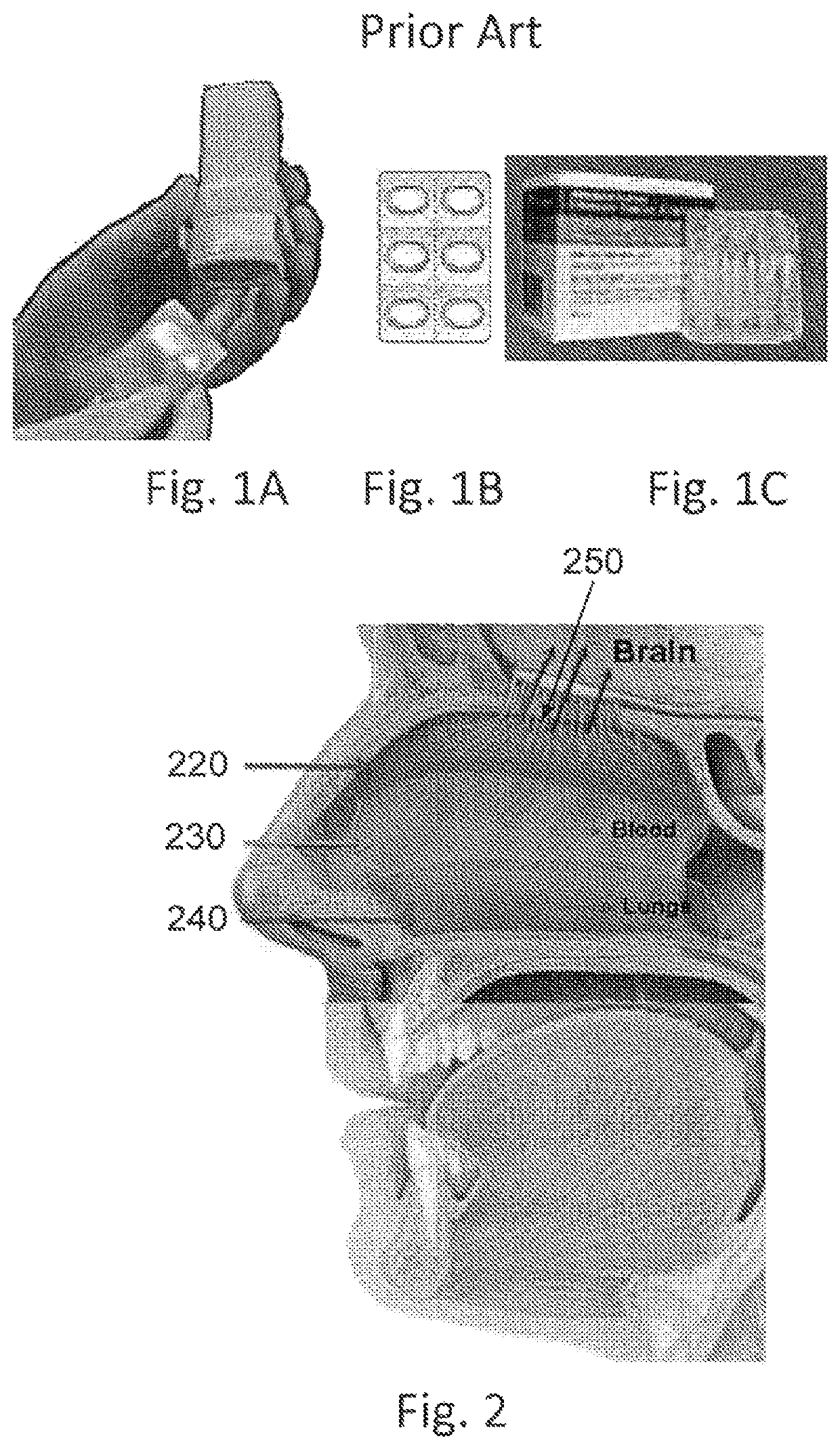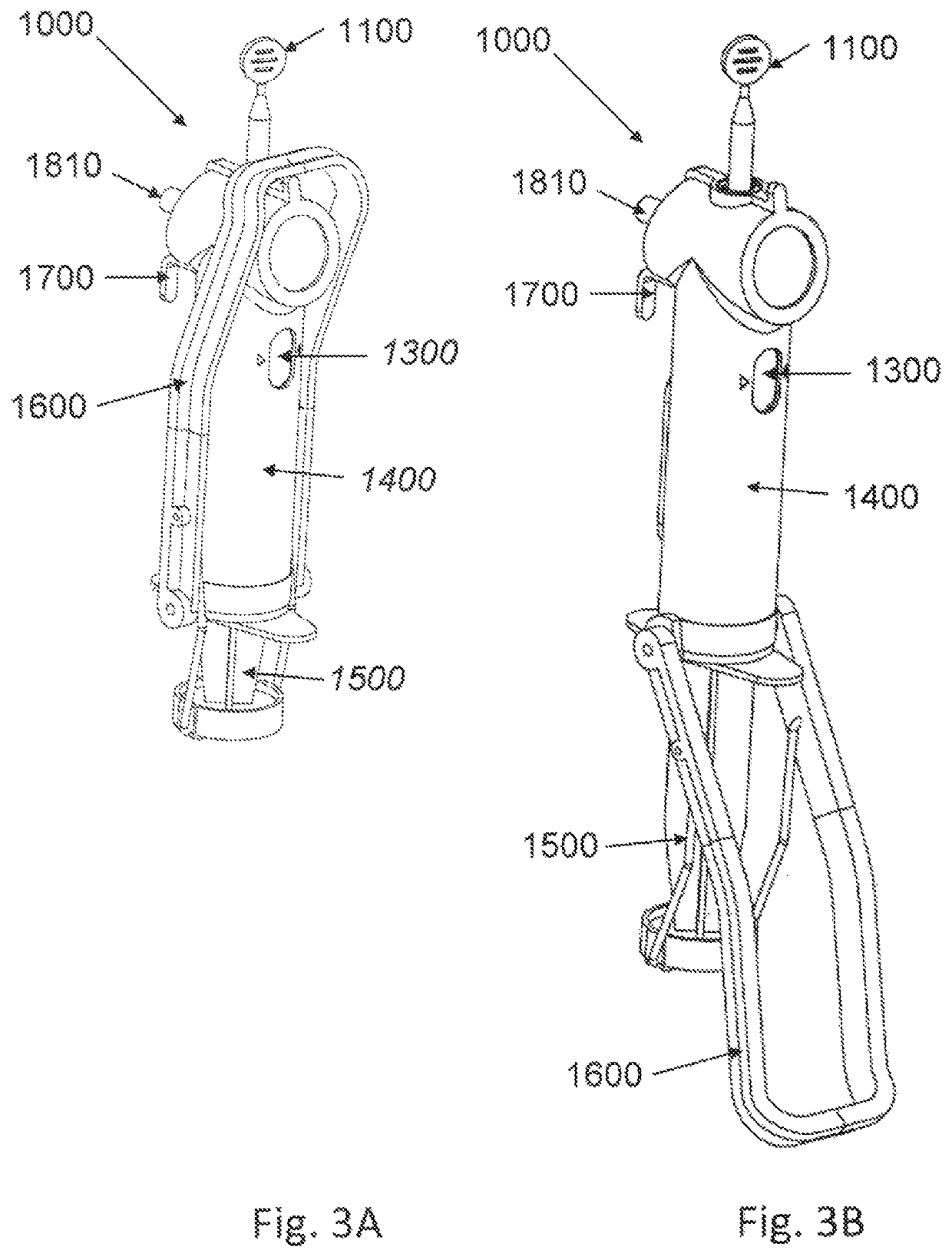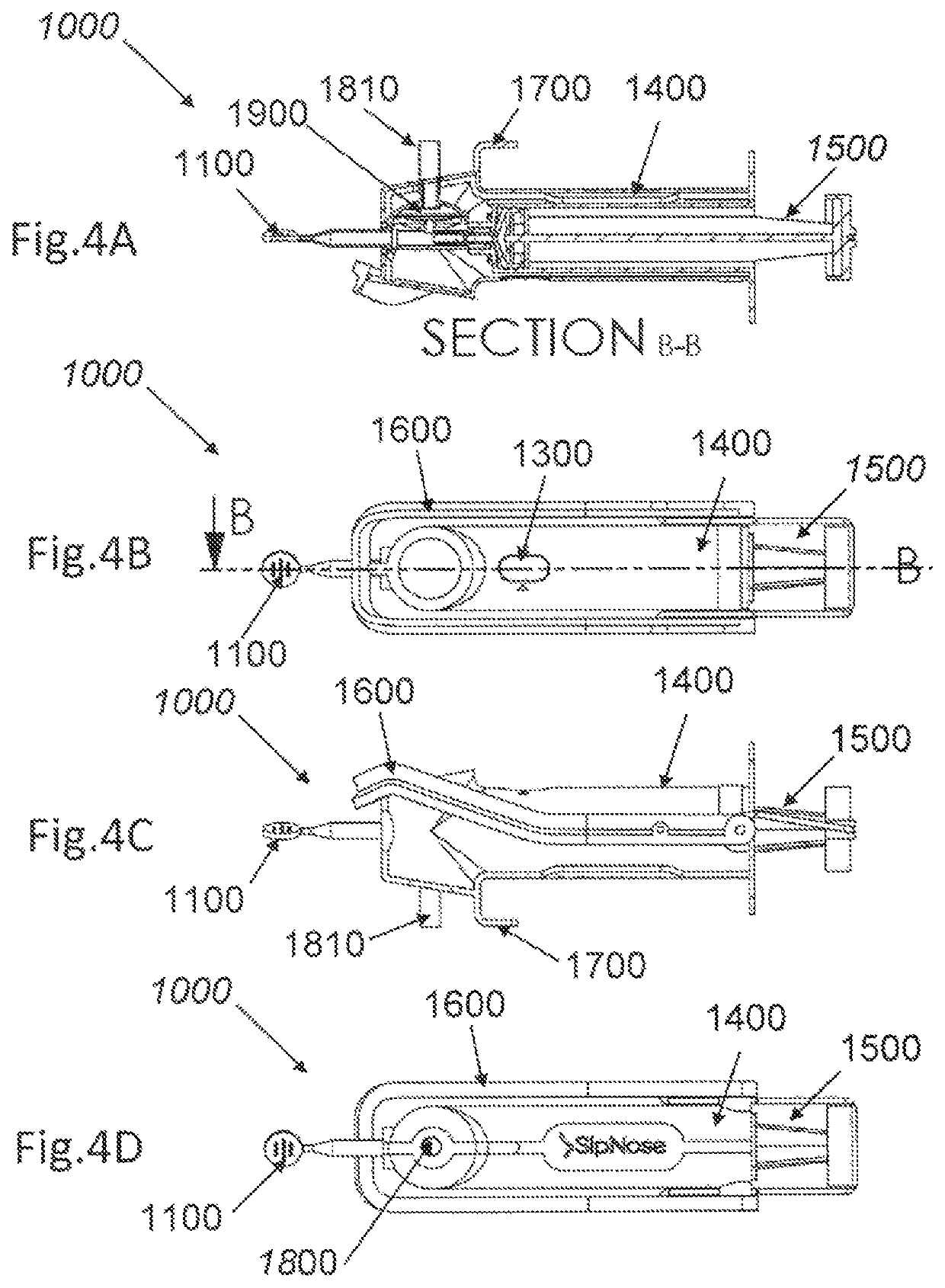Device to deliver a predetermined amount of a substance to a natural orifice of the body
a technology of a natural orifice and a substance, which is applied in the direction of medical devices, inhalators, medical devices, etc., can solve the problems of neglecting the difficulty of delivering a sufficient amount of material to the desired tissu
- Summary
- Abstract
- Description
- Claims
- Application Information
AI Technical Summary
Benefits of technology
Problems solved by technology
Method used
Image
Examples
example 1
[0304]An embodiment of a pressurized air carrier for providing controlled drug delivery to the nasal cavity.
[0305]Other embodiments can be used for delivery to the ear, mouth, throat and rectum.
[0306]In this embodiment of the device, the following parameters were variable, over the ranges given:[0307]Pressure, between about 1 bar and about 20 bar[0308]Air volume, between about 1 cc and about 50 cc[0309]Time between charging and activation, more than 0.1 sec
[0310]Another important consideration, not investigated in this example, is the location of the nozzle in the body orifice, for non-limiting example, the depth of insertion of the nozzle in the nasal cavity.
[0311]In practice, at least one of: the pressure, air volume and time between charging and activation can be optimized based on the characteristics of the compound, drug or medicament such as, but not limited to, the volume, density, viscosity, state of matter, drug formulation, and any combination thereof. The compound can be ...
example 2
[0334]In contrast to prior-art nasal delivery devices and technologies, the devices of the present invention can produce a fine aerosol in the nasal cavity or other desired body orifice at the target area and at the location of the target tissue instead of within the device or immediately after exit from the device. Utilizing the pressure as a driving force and the air as a carrier allows the material to be released from the nozzle as a combination of material in a pre-aerosolized state and an aerosol. The properties of the resultant aerosol are typically dependent on the properties of the device and of the medium into which the device is discharged. The properties of the device which affect the aerosol characteristics are the delivery pressure, the volume of the delivery gas, and the characteristics of the delivery orifice.
[0335]In some embodiments, the aerosol properties are fairly independent of the delivered substance, in other embodiments, the pressure, volume, orifice characte...
example 3
[0339]In all known other mechanisms of creating aerosols, an orifice is placed at the end of a nozzle and the inner diameter of the device's nozzle and, especially, its orifice, is the main parameter that influences aerosol formation and the aerosol's characteristics. In contrast, in the present invention, no orifice is needed. More than that, putting a conventional orifice at the end of the nozzle will actually limit the pressure and the forces reaching the liquid or powder being dispensed, and thus will reduce the ability to create the desired fine aerosol at the target site. Thus, the large diameter tubing that can be used in the present invention, about an order of magnitude larger than the diameter of commonly-used tubes and orifices, results in the desired fine aerosol, carried efficiently into the nasal cavity with droplet diameters on the order of 0.1-50 micrometer.
[0340]In the present invention, the aerosol is created as a result of the nasal cavity resistance and is influe...
PUM
 Login to View More
Login to View More Abstract
Description
Claims
Application Information
 Login to View More
Login to View More - R&D
- Intellectual Property
- Life Sciences
- Materials
- Tech Scout
- Unparalleled Data Quality
- Higher Quality Content
- 60% Fewer Hallucinations
Browse by: Latest US Patents, China's latest patents, Technical Efficacy Thesaurus, Application Domain, Technology Topic, Popular Technical Reports.
© 2025 PatSnap. All rights reserved.Legal|Privacy policy|Modern Slavery Act Transparency Statement|Sitemap|About US| Contact US: help@patsnap.com



